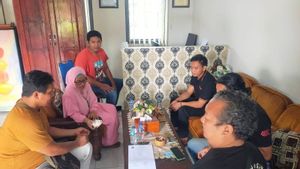JAKARTA - The Financial Services Authority (OJK) and the Central Statistics Agency (BPS) reported the results of the 2024 National Literacy and Financial Inclusion Survey (SNLIK).
The survey results stated that the women's financial literacy index was higher than that of men in 2023. The women's financial literacy index was recorded at 66.75 percent, while men were 64.14 percent lower.
"Dahulu, the literacy level of women is under men, this is our focus because mothers are finance ministers at home, so we focus on programs for mothers and in the previous year (2023), women's literacy rate is higher," said Chief Executive of Financial Services Business Behavior Supervisory, Education and Consumer Protection OJK Frederica Widyasari Dewi during the 2024 SNlik press conference in Jakarta, Friday 2 August.
Friderica or who is familiarly called Kiki said that the women's financial inclusion index was also higher than the male financial inclusion index, which was 76.08 percent and 73.97 percent, respectively.
The results of SNLIK in 2024 show that Indonesia's population financial literacy index in 2023 will reach 65.43 percent, with a financial inclusion index of 75.02 percent.
The survey also measured the level of Islamic financial literacy which reached 39.11 percent, while the Islamic financial inclusion index was 12.88 percent.
"From this survey, Islamic financial literacy and inclusion need to be further improved," said Kiki.
Meanwhile, when measured by age, the age group of 26-35 years has the highest financial literacy index of 74.82 percent. Meanwhile, for the age range of 36-50 years, and 18-25 years, each has a financial literacy index of 71.72 percent, and 70.19 percent.
SEE ALSO:
On the other hand, the 15-17 year age group and 51-79 years old have the lowest financial literacy index, namely 51.70 percent and 52.51 percent, respectively.
Furthermore, Kiki explained that the age group is 26-35 years, 36-50 years and 18-25 years old has the highest financial inclusion index, which is 84.28 percent, 81.51 percent, and 79.21 percent, respectively.
However, for the 15-17 year age group and 51-79 years old, the lowest financial inclusion index was recorded at 57.96 percent and 63.53 percent, respectively.
The English, Chinese, Japanese, Arabic, and French versions are automatically generated by the AI. So there may still be inaccuracies in translating, please always see Indonesian as our main language. (system supported by DigitalSiber.id)












